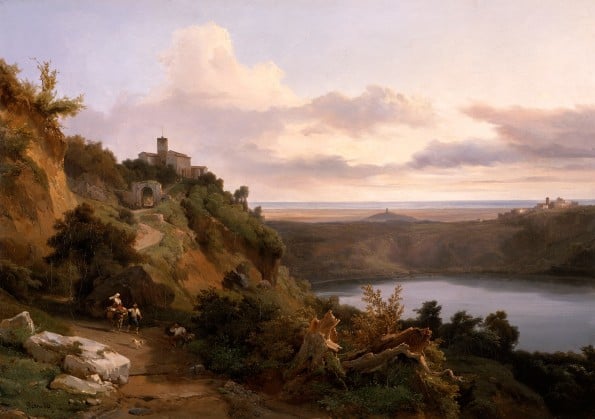The emperor Caligula is infamous for a whole host of reasons. According to the ancient sources, when he wasn’t busy shagging his three sisters or arbitrarily murdering anyone who posed him the slightest of threat, he would pass his time making the lives of Rome’s senatorial elite a living nightmare, demanding to be worshipped as a god or leading the Roman state or the Roman army on a series of vainglorious (and ultimately fruitless) pursuits. But aside from his more notorious proclivities, what’s less well known is that Caligula was an enthusiastic shipbuilder.
Caligula’s second century AD biographer, Suetonius, has left us a colorful description of some magnificent galleys the emperor once built along the beautiful coastline of Campania (the southern Italian region that has Naples as its capital):
He had constructed some Liburnian galleys, their prows studded with jewels, their sails of many colors, whose ample interiors housed baths, porticoes, and dining-rooms as well as a large variety of vines and fruit-trees so that lounging on these vessels he might travel by day along the shores of Campania entertained by choirs and orchestras.

Although we’re constantly discovering Roman shipwrecks, some dating as back as the First Punic War against Carthage (264 – 241 BC), we’ve yet to locate the ships Suetonius mentions. In all likelihood, they, like the vast majority of relics from the ancient world, have been lost to the processes of erosion, degradation, and the passing of time. However, although a lot of what Suetonius writes about Caligula is historically debatable, we know that he was telling the truth about the emperor’s nautical endeavors because we’ve discovered two—soon to be three—other ships the emperor built.
The site of the ships’ discovery, Lake Nemi, lies 19 miles south of Rome in the region of Lazio. The lake’s name, Nemi, comes from the Latin word nemus, meaning “holy wood”. It’s easy to see how this description might have come about. Lake Nemi is a place of astounding natural beauty: situated some 300 metres above sea level, the lake was formed within an extinct volcanic crater. Its stunning scenery wasn’t lost on past commentators. Lord Byron wrote of, “Nemi, navelled in the woody hills”, while artists from Turner to Jean Charles Joseph used the lake as the backdrop for their dramatic landscapes (pictured below).

Today, Nemi is famous mainly for its distinctively small and sweet strawberries. Throughout history, however, Nemi has been famous across Italy and abroad as the resting place of Caligula’s colossal pleasure barges (known as the Nemi Ships). It’s incredible that Caligula thought to build these 220 and 230 feet long floating orgy palaces on Lake Nemi, considering it only has a circumference of 3.5 miles. It’s even more incredible that, since the emperor’s assassination at the hands of his Praetorian Guard in 41 AD, the area’s inhabitants never lost the knowledge that two of these ships lay sunken at the bottom of the lake’s western side.

